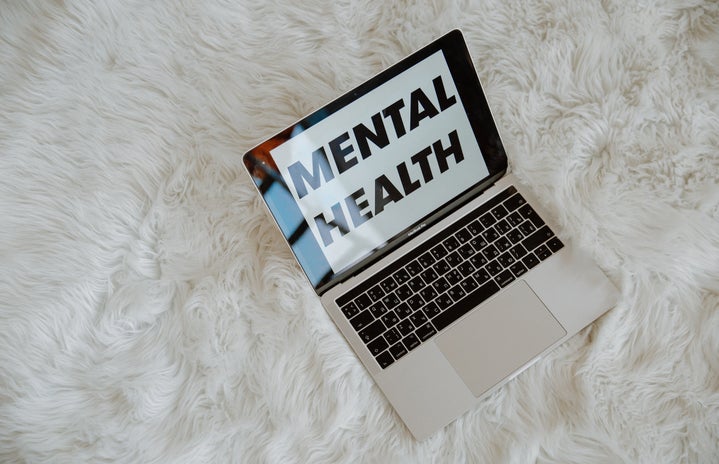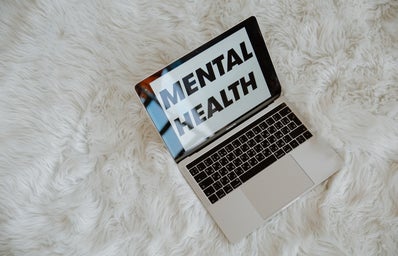The first time I consciously became aware of my anxiety was during my junior year of high school, in my AP World History course. Whenever my teacher announced an upcoming exam or project, my leg would start uncontrollably shaking and my breathing became increasingly heavy. The weirdest part about this experience was that I wasn’t the one to notice my reaction, it was my teacher. He came up to me and, in the kindest way possible, said “Natalie you look like you’re about to pass out after I mentioned that assignment – are you ok?” I didn’t even realize I was having this visceral reaction to a test. It was almost as if I had become so accustomed to these overwhelming feelings that it seemed natural for me to react as such. My own obliviousness to my symptoms highlights how ignorant I was to my anxiety and mental health for the greater part of my life.
I am an extrovert. I was probably kicked out of class three to five times a week during Elementary school because I just couldn’t stop talking at inappropriate times. However, my tendency to be a “chattynat” has obscured my mental health. My friends and family told me that they were shocked to hear about my struggles with anxiety and depression, and that “they could have never known.” I encountered the most difficult period in my mental health two years ago. I recall waking up every day for nearly eight months and hoping that today would finally be the day I could break the cycle and not have a panic attack. The only way to describe this experience was that I felt like I was wearing a name tag that said “Natalie” yet, I could not have been more different from that person. I had no idea who I was, who I wanted to be, or how to come to terms with my emotions. I felt really trapped in my mental health and I didn’t know how to express this. I was really afraid that people would notice the disjunct of who I presented to the world and how I felt inside, yet, my talkative nature successfully masked my sentiments.

Sophie: “I am painfully aware of the way mental health can look different with different people. I’ve struggled with lots of different mental health issues over my lifetime, but the scariest for me was my experience with a restrictive eating disorder in my freshman year of college. I really didn’t fit the traditional mold for someone dealing with that. I am not built to be a tiny person, and though I lost 20% of my body weight (which was healthy before) over the course of just a couple of months, I was never quite underweight on the BMI scale, which is one of the most common tools used to recognize anorexia. I found that I was telling myself “I’m not skinny enough to have an eating disorder” or that I didn’t need help because I was a college athlete experiencing pretty remarkable success in my first year. Beyond this, I didn’t ever even really hate my body, which was another factor that led me to believe I was not dealing with an eating disorder until it was advanced. The reasons that I gave myself for limiting my intake and only “eating clean” (an excuse for cutting out pretty much everything but undressed vegetables) were based on my sport and the belief that I had drilled into my own head that every single thing I put into my body would affect my athletic performance. I have always been someone that was proud of and comfortable with my curves, but I tricked myself into believing that starving myself was the only way to be athletically successful.”
Long story short, because I wasn’t underweight or nauseated by the sight of my body in the mirror, I was able to convince myself for months that nothing was wrong with me. It wasn’t until we were sent home because of the pandemic that I realized, reluctantly, that something was wrong. I saw my family’s alarm at my shrinking frame as I shared clothes with the little sister who’d always been several sizes smaller than me and as I cried because I watched my mom cook with oil or serve me a slice of pizza. I was fortunate to have a support system that helped me fight my demons, but I am painfully aware of how society’s impression of anorexia could have become deadly for me.
Sophie’s story illustrates how the stigma surrounding anorexia and other various eating disorders create a notion of a one-size-fits-all mold: that an individual grappling with an eating disorder is supposed to look extremely underweight. If an individual’s physical stature does not meet this mold, as in they appear to be “normal weight” or “overweight,” to the external eye, that individual’s mental health may be minimized, misinterpreted and even overlooked. Believe it or not, not every person suffering from an eating disorder is a visibly underweight wealthy white girl. This actually couldn’t be farther from the truth.

I want you to reflect on a time in your life that you struggled with your own mental health. How did you feel? Who did you share your experiences with? What did you share with them? How did they respond? Have you ever confronted this mold?
The point of this reflection is to try and illustrate the dichotomy we all face. There are some things in life that we simply cannot explain; we just feel them. To me, the hardest part about my anxiety is that I really want to tell the people in my life what I am feeling, but sometimes I simply do not know how to articulate my emotions. Putting what we feel into words is really difficult. In my own experience, when someone has told me that I don’t seem depressed or anxious because of their own subjective interpretation of my behavior, I only feel ten times worse. It makes me feel terrible about not being able to find the words to describe my emotions, because if I could have just explained it to them, then the person would know how far off their assumption was. It only makes me more painfully aware of how difficult it is to navigate and make sense of my anxiety. Not only this, but harmful assumptions can cause people to question whether they are really suffering at all, and beat themselves up for “overreacting.”




